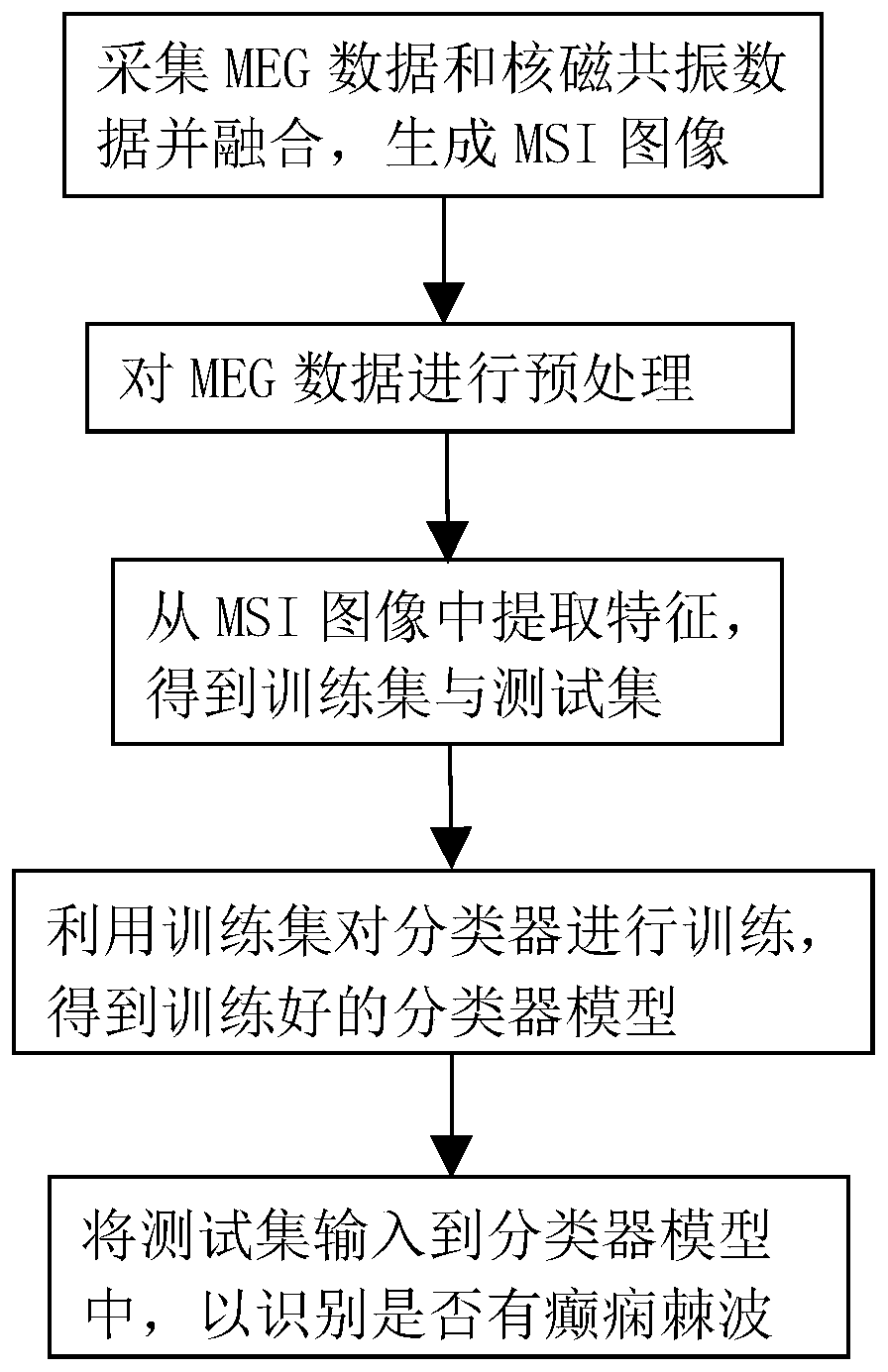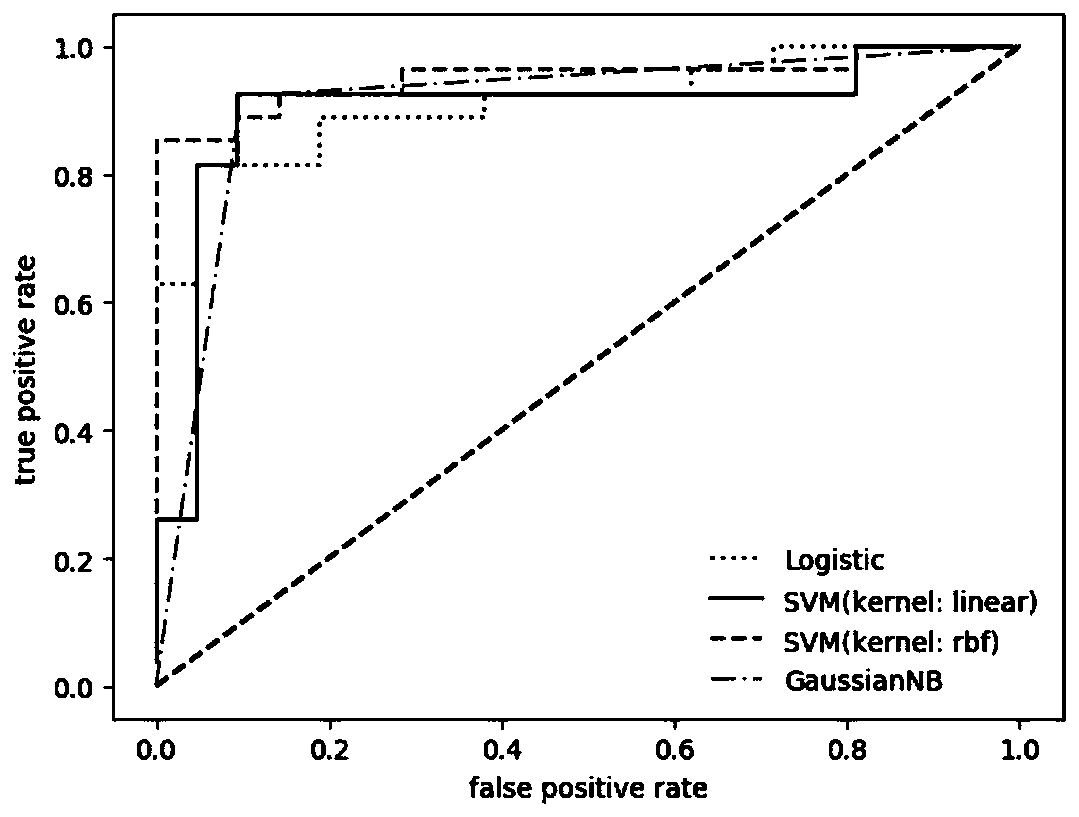Magnetoencephalography epileptic spike wave recognition method and system
A recognition method and technology of epilepsy spines, applied in medical science, sensors, diagnostic recording/measurement, etc., can solve problems such as energy-consuming, accuracy of classification results cannot be guaranteed, and judgment results are not the same
- Summary
- Abstract
- Description
- Claims
- Application Information
AI Technical Summary
Problems solved by technology
Method used
Image
Examples
Embodiment 1
[0058] Such as figure 1 As shown, the present invention proposes a method for identifying epileptic spikes in magnetoencephalography, comprising the following steps:
[0059] The MEG data and the nuclear magnetic resonance data of the epilepsy patient are collected, and the MEG data and the nuclear magnetic resonance data are fused to generate an MSI image, and the MEG data includes data with spikes and data without spikes.
[0060] In this step, the collected MEG data came from 20 patients diagnosed with insular lobe and insular opercular epilepsy who were examined by the Magnetoencephalography Center of Xuanwu Hospital of Capital Medical University. 9 females; aged 15 to 52 years, with an average of 28.7 years.
[0061] MRI should be performed at 1.5T or 3.0T for standard MRI scans, including SE sequence T1W1 and TSE sequence T2W1 in transverse position (slice thickness 5mm); oblique coronal view perpendicular to the long axis of the right hippocampus and liquid in transver...
Embodiment 2
[0100] Such as image 3 As shown, corresponding to Embodiment 1, this embodiment provides a MEG epilepsy spike recognition system, including:
[0101] The data acquisition unit is used to collect MEG data and nuclear magnetic resonance data of epilepsy patients, and fuse the MEG data and nuclear magnetic resonance data to generate MSI images, and the MEG data includes spike data and spike-free data;
[0102] A preprocessing unit, configured to preprocess the MEG data to obtain N spike data segments and spike-free data segments of the same duration respectively;
[0103] A feature extraction unit is used to extract the feature vectors of each section of data from the generated MSI image to form a sample data set, and divide the sample data set into a training set and a test set;
[0104] A training model unit, configured to use the training set and labels to train the classifier to obtain a trained classifier model;
[0105] The epileptic spike identification unit is used to ...
PUM
 Login to View More
Login to View More Abstract
Description
Claims
Application Information
 Login to View More
Login to View More - R&D
- Intellectual Property
- Life Sciences
- Materials
- Tech Scout
- Unparalleled Data Quality
- Higher Quality Content
- 60% Fewer Hallucinations
Browse by: Latest US Patents, China's latest patents, Technical Efficacy Thesaurus, Application Domain, Technology Topic, Popular Technical Reports.
© 2025 PatSnap. All rights reserved.Legal|Privacy policy|Modern Slavery Act Transparency Statement|Sitemap|About US| Contact US: help@patsnap.com



